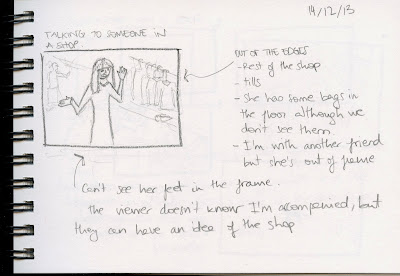Chose a picture, identify a series of smaller frames within the picture to create a new story and outline it.
 |
| Stockholm Central Station, by Michell Zappa from Wikimedia Commons |
I have chosen this photo of Stockholm Central train station hall. We can see a lot of people coming and going in their daily routines, but if we look closer, we'll find Jack. He looks like he has no rush or nowhere to go... and that's because he hasn't. Jack has been sleeping in a hostal for the last 5 years, and in winter during the day he comes to the station because it's warmer than the streets. Besides, he knows some people in this hectic place who usually help him.
There is Pete, for example, reading in the cafeteria. He retired many years ago, and since then he comes to have a cappuccino every morning, then he will left to do the groceries shopping, but before leaving he will buy a coffee for Jack and will spend some time chatting with him.
Also the two nice guys who must work in the office close to the station. They come by train every morning, stop to grab some breakfast and leave. Once Jack met one of them in the street while the guy was walking with his family, and he greeted Jack and asked if everything was OK... well, that's sadly unusual. Very nice people indeed.
Jack also likes the station because he can make up stories, and then the times flies by. For example today he saw this elderly couple who looked anxious and nervous with their luggage and the tickets in their hands... He imagined they were going to meet his new granddaughter, who lives in Australia, and they'll spend some time in the southern summer with their family... how fantastic would that be.
 |
| From left to right, Jack, Pete, the two nice guys and the elderly couple |













